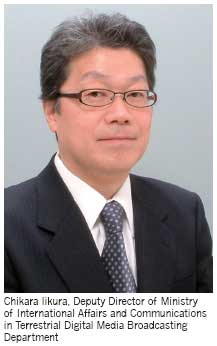
This 87 billion Yen investment into switching to digital, mostly from the national treasury debt, requires people to purchase a new TV or a tuner to be equipped for their analog TV. 
by TVA Editor

This 87 billion Yen investment into switching to digital, mostly from the national treasury debt, requires people to purchase a new TV or a tuner to be equipped for their analog TV. 
 Keshet International boards Dinner with Gavin Rossdale
Keshet International boards Dinner with Gavin Rossdale Race Beyond Borders: Studio 100 Film Brings Qvisten Animation’s Rally – From Paris to the Pyramids to EFM
Race Beyond Borders: Studio 100 Film Brings Qvisten Animation’s Rally – From Paris to the Pyramids to EFM
Screenshot
 ZEE5 Global and Jio Studios unite to bring blockbusters Hisaab Barabar and Mrs. to OTT Screens
ZEE5 Global and Jio Studios unite to bring blockbusters Hisaab Barabar and Mrs. to OTT Screens
An unrivalled and highly elusive lone assassin, the Jackal, (Eddie Redmayne) makes his living carrying out hits for the highest fee. But following his latest kill, he meets his match in a tenacious British intelligence officer (Lashana Lynch) who starts to track down the Jackal in a thrilling cat-and-mouse chase across Europe, leaving destruction in its wake.
 Keshet International sells Tuesday’s Child TV’s The Hit List to M6 Groupe in France
Keshet International sells Tuesday’s Child TV’s The Hit List to M6 Groupe in FranceSignup here to get the latest news and updates.

Subscribe now to receive the latest news, updates, and exclusive insights. Don’t miss out!
By submitting this form, you consent to receive marketing emails from Television Asia Plus. You can revoke your consent to receive emails at any time by using the SafeUnsubscribe® link, found at the bottom of every email.
Disclaimer: Translations on this website are automated using Google Translate. While we strive for accuracy, please be cautious, as machine translations may contain errors. For critical or sensitive content, consider seeking professional human translation. We are not liable for any reliance on the translated content.
